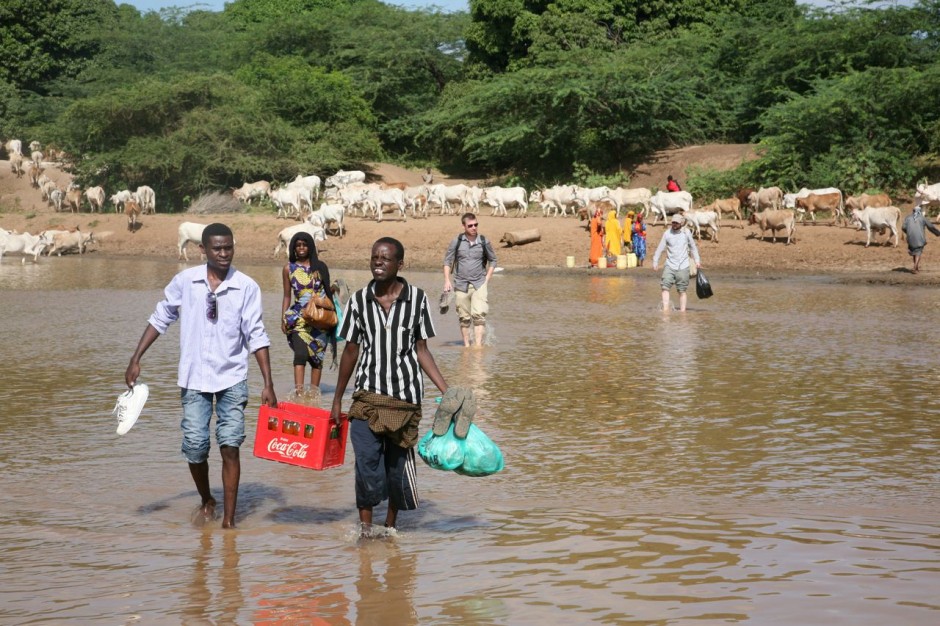by John Green and Christine Mutisya
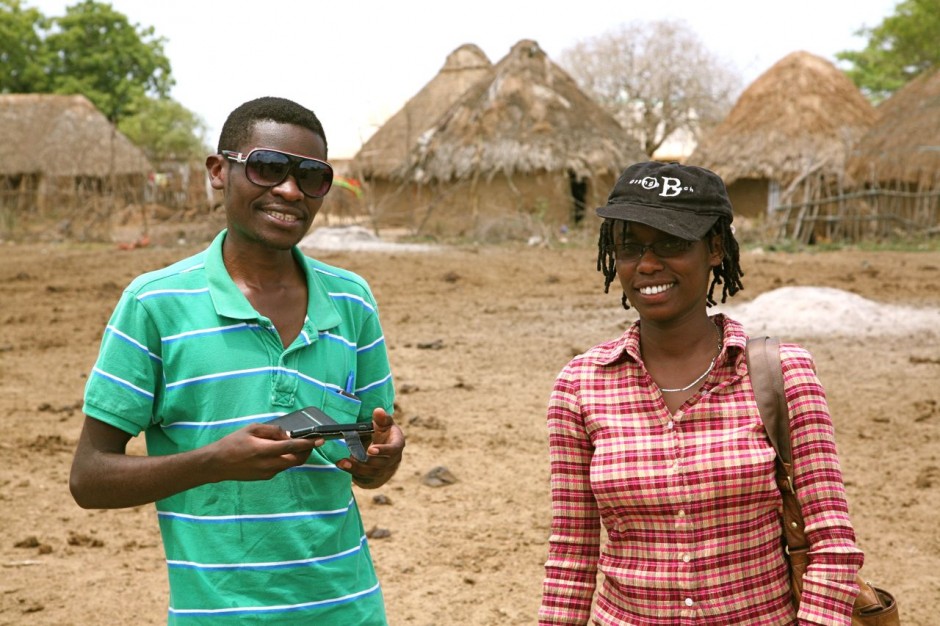
After a long, eventful journey we finally reached the Tana Delta – Garsen town to be specific. As we are both from Nairobi, we experienced a drastic change in the climate, Garsen being very hot and dusty. The level of development, great network coverage and presence of people from different tribes and cultures, as well as the fact that the town is predominantly Orma all amazed us. It’s easy to spot the difference amongst the two communities in their dressing mode, level of development, difference in lifestyle, culture and religious affiliation.
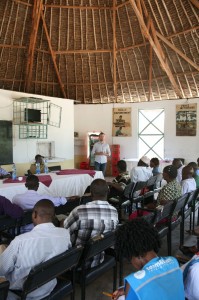 We hit it right off with the monthly Peace Conference at Maridhiano, a meeting with various NGOs who are directly involved in peace building in the Tana Delta, local government authority and other stakeholders interested in peace building. During this meeting we were welcomed and the peace building stakeholders and local authorities appreciated the relevance of our Una Hakika project after Chris, Executive Director of Sentinel project gave a brief introduction. The Deputy County Commissioner (DCC) said “rumours are bread and butter in Tana River County,” which was an affirmation to the role Una Hakika will play in bringing peace in the area. We also learned about factors other than ethnicity: floods, drought and allocation of land contribute towards volatility of the area and the best strategies on working effectively in the area. During the forum we had the privilege of meeting other members from Tegla Leroupe Peace Foundation, Team and Team International, UNDP, Nature Kenya, the Maryknoll Sisters, as well as government officials from NIS. We shall continue attending the monthly forums as a peace building NGO.
We hit it right off with the monthly Peace Conference at Maridhiano, a meeting with various NGOs who are directly involved in peace building in the Tana Delta, local government authority and other stakeholders interested in peace building. During this meeting we were welcomed and the peace building stakeholders and local authorities appreciated the relevance of our Una Hakika project after Chris, Executive Director of Sentinel project gave a brief introduction. The Deputy County Commissioner (DCC) said “rumours are bread and butter in Tana River County,” which was an affirmation to the role Una Hakika will play in bringing peace in the area. We also learned about factors other than ethnicity: floods, drought and allocation of land contribute towards volatility of the area and the best strategies on working effectively in the area. During the forum we had the privilege of meeting other members from Tegla Leroupe Peace Foundation, Team and Team International, UNDP, Nature Kenya, the Maryknoll Sisters, as well as government officials from NIS. We shall continue attending the monthly forums as a peace building NGO.
The DCC was helpful enough to assist us by providing us with a list of the chiefs in the area who we have contacted to request permission to conduct a survey in their communities. All chiefs were welcoming and helpful and they assisted us in congregating the people. So far we have visited 6 villages – Kipao, Ngao, Semikaro, Nduru, Golbanti and Tarassa to conduct our survey. The survey process has been running smoothly, as the chiefs, elders of the villages and leaders of the respective groups of the society assisted us.
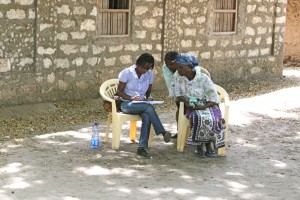 Most people in the community welcomed the idea of Una Hakika, and strongly believe that rumours did in fact contribute to violence in the area. Although there is peace in the area, tension and worry among the people is notable since there is still a strong mistrust among the different communities. We have also encountered language barriers and some people termed the questions as “ too technical “ due to low literacy level, so we try to frame the questions in a way they could best understand in Swahili.
Most people in the community welcomed the idea of Una Hakika, and strongly believe that rumours did in fact contribute to violence in the area. Although there is peace in the area, tension and worry among the people is notable since there is still a strong mistrust among the different communities. We have also encountered language barriers and some people termed the questions as “ too technical “ due to low literacy level, so we try to frame the questions in a way they could best understand in Swahili.
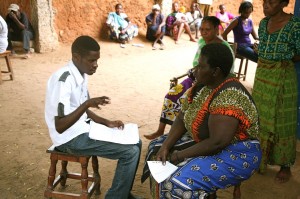 However, it’s inevitable to encounter some level of resistance, especially from individuals who feel that so many surveys have been carried out in the region and no permanent solution seems to be coming any time soon. Others still feel like we can’t do much by only countering rumours and failing to address the structural causes of the conflict, specifically land issues.
However, it’s inevitable to encounter some level of resistance, especially from individuals who feel that so many surveys have been carried out in the region and no permanent solution seems to be coming any time soon. Others still feel like we can’t do much by only countering rumours and failing to address the structural causes of the conflict, specifically land issues.
The conflict between the Pokomo and Orma has had ripple effects that are felt among marginalized communities living in the same region such as the Watta community who fled their homes for fear of being attacked. Surprisingly, Odha, Garsen, where the Orma and Pokomo live side-by-side, were not affected by the skirmishes, and still live peacefully to date.
Despite the different challenges faced so far we have been successful in meeting our objectives of this trip due to great teamwork and assistance from the Tana Delta community.
